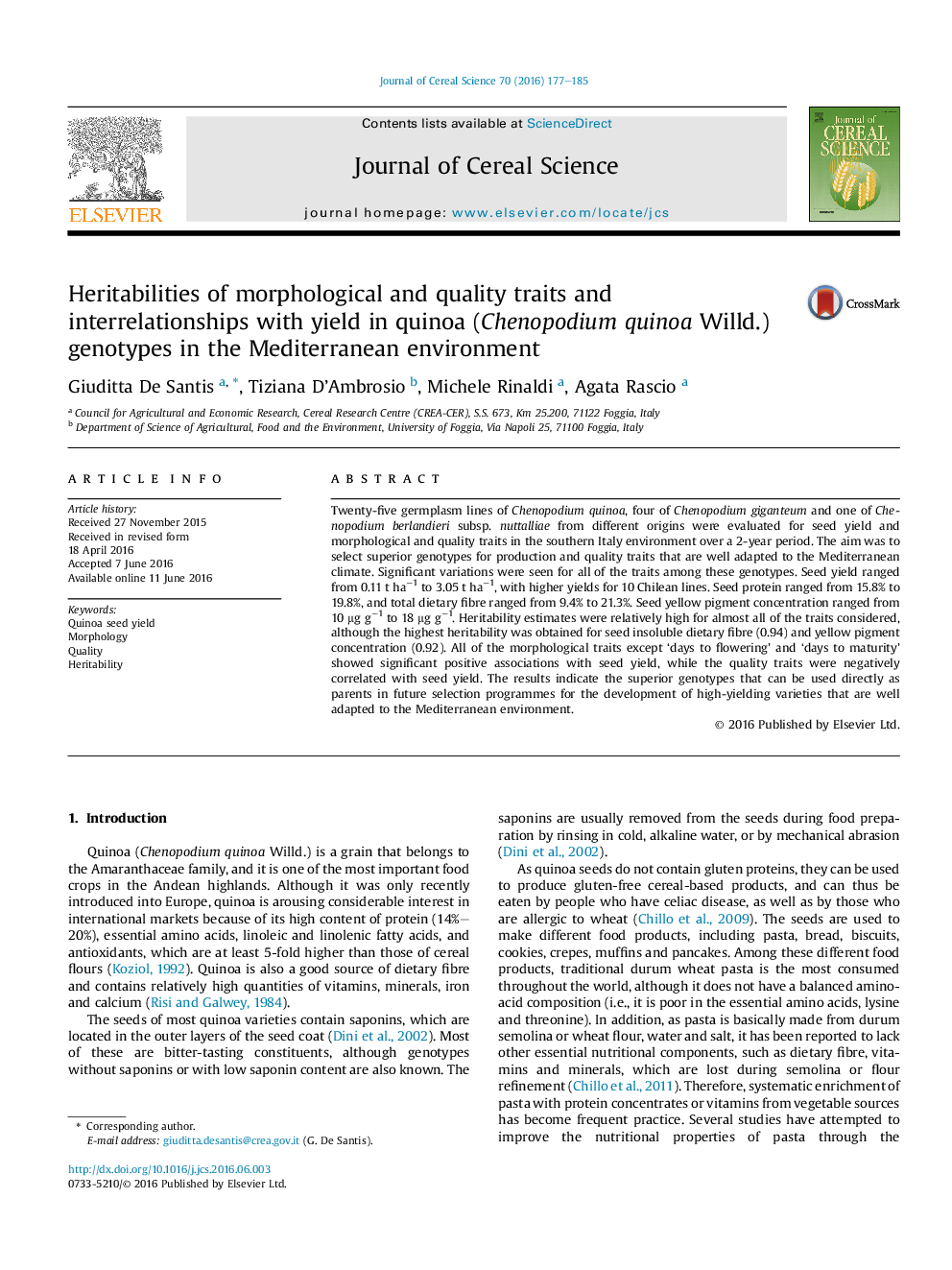| کد مقاله | کد نشریه | سال انتشار | مقاله انگلیسی | نسخه تمام متن |
|---|---|---|---|---|
| 4515492 | 1624892 | 2016 | 9 صفحه PDF | دانلود رایگان |

• Twenty-five quinoa germplasm lines were evaluated for yield and quality traits.
• Yield ranged from 0.11 to 3.05 t ha−1, seed protein content from 15.75 to 19.84%.
• Heritability estimates were high for seed yield and some quality traits.
• Selection of superior genotypes to use as parents for developing novel cultivars.
Twenty-five germplasm lines of Chenopodium quinoa, four of Chenopodium giganteum and one of Chenopodium berlandieri subsp. nuttalliae from different origins were evaluated for seed yield and morphological and quality traits in the southern Italy environment over a 2-year period. The aim was to select superior genotypes for production and quality traits that are well adapted to the Mediterranean climate. Significant variations were seen for all of the traits among these genotypes. Seed yield ranged from 0.11 t ha−1 to 3.05 t ha−1, with higher yields for 10 Chilean lines. Seed protein ranged from 15.8% to 19.8%, and total dietary fibre ranged from 9.4% to 21.3%. Seed yellow pigment concentration ranged from 10 μg g−1 to 18 μg g−1. Heritability estimates were relatively high for almost all of the traits considered, although the highest heritability was obtained for seed insoluble dietary fibre (0.94) and yellow pigment concentration (0.92). All of the morphological traits except ‘days to flowering’ and ‘days to maturity’ showed significant positive associations with seed yield, while the quality traits were negatively correlated with seed yield. The results indicate the superior genotypes that can be used directly as parents in future selection programmes for the development of high-yielding varieties that are well adapted to the Mediterranean environment.
Journal: Journal of Cereal Science - Volume 70, July 2016, Pages 177–185